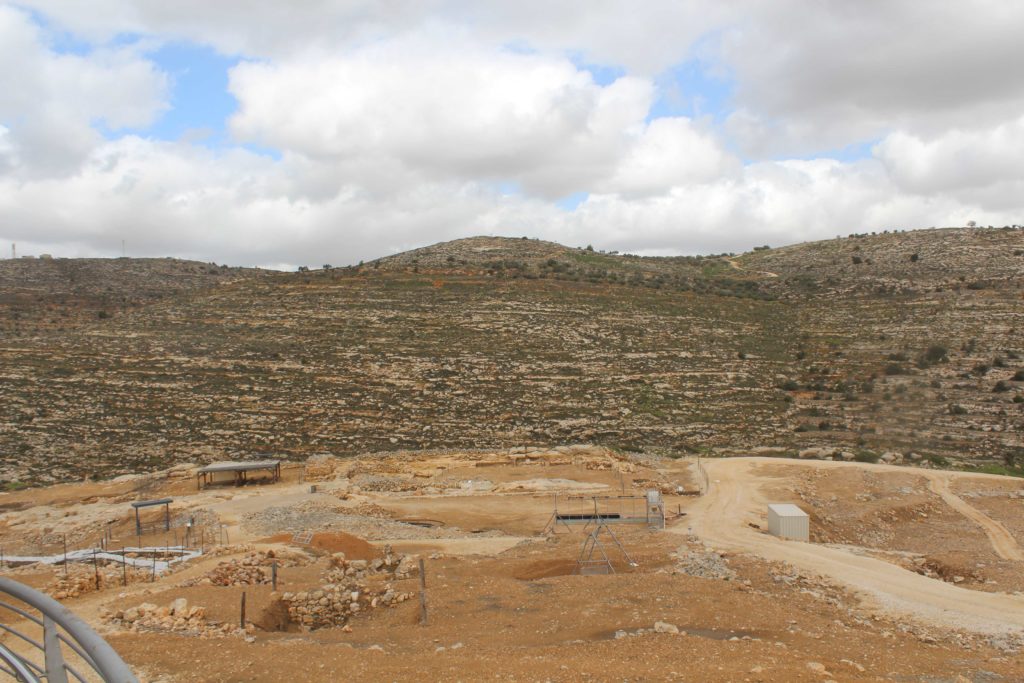Archaeologist Uncovers Artifacts Pointing to Site of Joshua-Era Israelite Tabernacle in Shiloh

SHILOH — A U.S.-based archaeologist and his dig team have uncovered a number of artifacts in the land of Shiloh on Israel’s West Bank that he believes point to a site where activity for the Israelite tabernacle, as outlined in the Old Testament, took place for more than 300 years.
Scott Stripling with the Pennsylvania-based Associates for Biblical Research (ABR), who also serves as a professor of Biblical Archaeology and Church History at The Bible Seminary in Katy, Texas, was recently interviewed by The Times of Israel and The Jerusalem Post about the matter.
“Prior to Jerusalem, it was all about Shiloh, so this was Israel’s first capital. Jerusalem remained in Jebusite or Canaanite hands for hundreds of years, whereas Joshua sets up the mishkan at Shiloh,” he explained. “And so we’re very interested in seeing the transition from say the Amorite/Canaanite culture into the Israelite culture.”
Shiloh is mentioned in numerous instances in the Scriptures, including in Joshua 18:1, which states, “And the whole congregation of the children of Israel assembled together at Shiloh, and set up the tabernacle of the congregation there. And the land was subdued before them.” The tabernacle was stated to have remained in the location for the next 300 years throughout the period of the judges.
In August, ABR announced that it had found three altar horns in Shiloh in the general area where the remains of an Iron Age building had earlier been discovered. A platform has also been uncovered, which Stripling hopes to excavate further.
“The original altar likely included four horns, like the four-horned Beersheva altar that was dismantled and placed in secondary usage in King Hezekiah’s 8th century reforms (2 Chronicles 29-32, 2 Kings 18:4),” it outlined. “The three altar horns are particularly exceptional as a witness to Israel’s history, and particularly the sacrificial system as described in the Bible.”
Stripling said that a significant number of bones from animals that would have been used in Old Testament sacrifices were also found in the strata.
“These were kosher and young animals, many with signs of burn or butcher marks on them, and they were mostly from the right side of the animal,” he told The Jerusalem Post. “For me, it was [confirmation of] Leviticus chapter 7: The right side of the animal was the priest’s portion, which would have been consumed at Shiloh. It would have been sacrificed, eaten by the priest and the bones disposed.”
A number of storage rooms have also been found in the area — with possibly more to be found, which Stripling believes denotes where various offerings were kept.
“If we’re assuming there was a sacrificial system there … well, what do you bring if you’re going to bring your tithe? You can’t make a secure online donation at Tabernacle.org; you can’t write a check. What are you going to do? You’re going to bring commodities: barley, figs, pomegranates. And so what do we find? Storage rooms around the entire perimeter,” Stripling told The Times of Israel.
To further solidify this belief, a number of sherds of pottery have likewise been unearthed, as well as two ceramic pomegranates, which was a sacred food at the time of the Tabernacle.
“The only sites in Israel where we have found pomegranates like this one have been Levitical sites,” he stated, pointing to biblical text that notes that pomegranate figures hung from the robe of the high priest.
“And beneath upon the hem of it thou shalt make pomegranates of blue, and of purple, and of scarlet, round about the hem thereof; and bells of gold between them round about,” Exodus 28:33 reads.
Exodus 29:24-26 also chronicle, “And they made upon the hems of the robe pomegranates of blue, and purple, and scarlet, and twined linen. And they made bells of pure gold, and put the bells between the pomegranates upon the hem of the robe, round about between the pomegranates. A bell and a pomegranate, round about the hem of the robe to minister in, as the Lord commanded Moses.”
Pomegranates were also the only food allowed in the Holy of Holies.
When it was asked how Christianity colors his work as an archaeologist, pointing out that most archaeologists in Israel are Jewish, Stripling noted, “[O]f course our roots are in Judaism, so it’s the same Scriptures that we’re sharing.”
“It’s very meaningful, and sometimes I just have to stop and remind myself where I am. And one of my favorite verses from the Hebrew Bible is Psalm 102:14, ‘Blessed are those who love your dust and cherish your stones,’” he stated. “And it’s in my nose and my ears and under my fingernails, so I think it’s safe to say that I cherish it.”
Stripling’s team consists of scientists, historians and scholars from 11 universities around the world.
Become a Christian News Network Supporter…







Comments are closed.